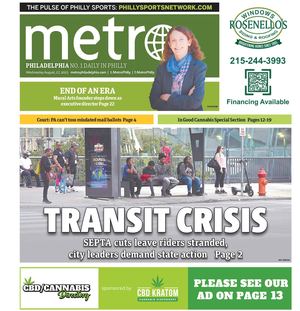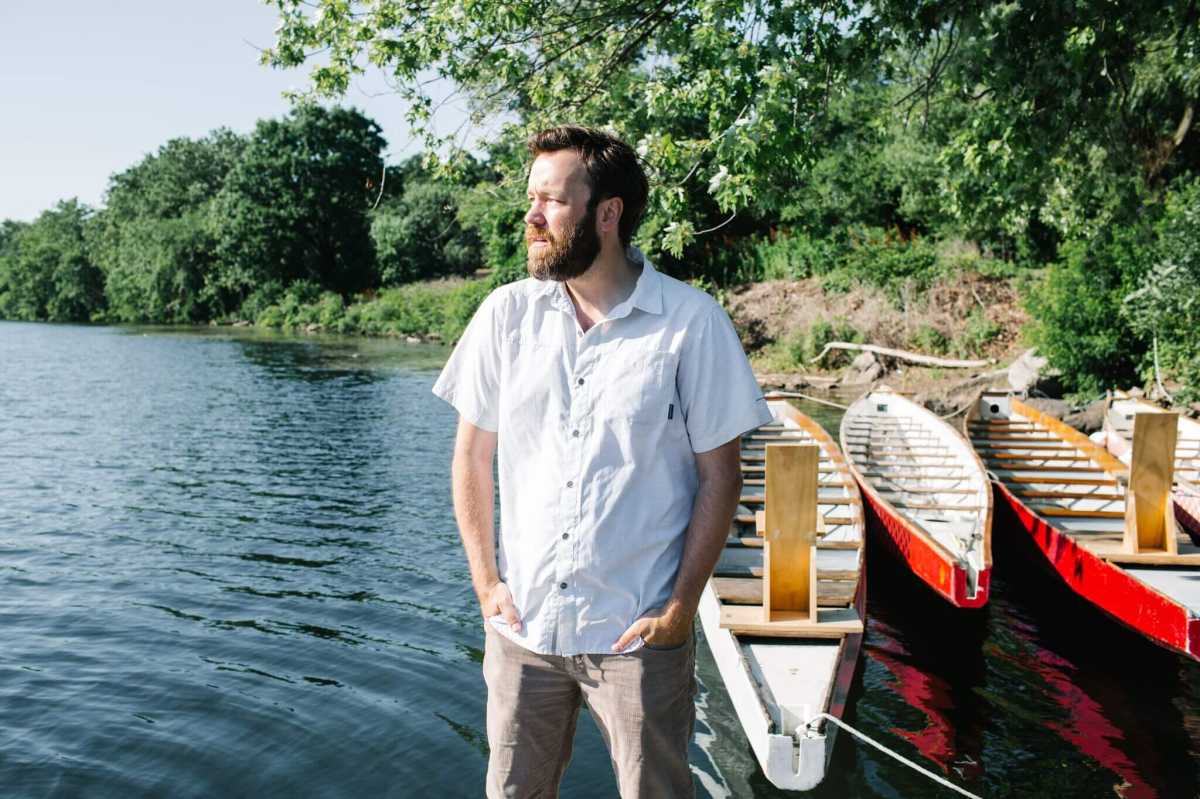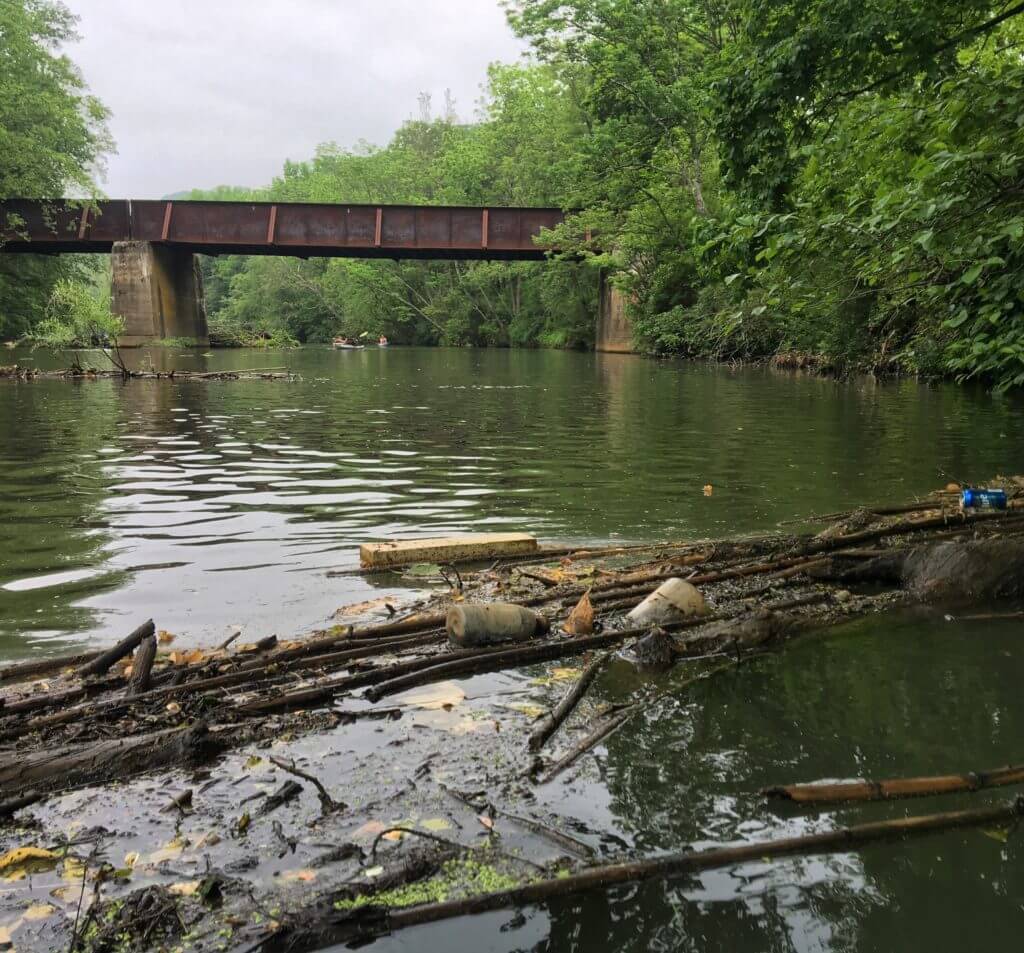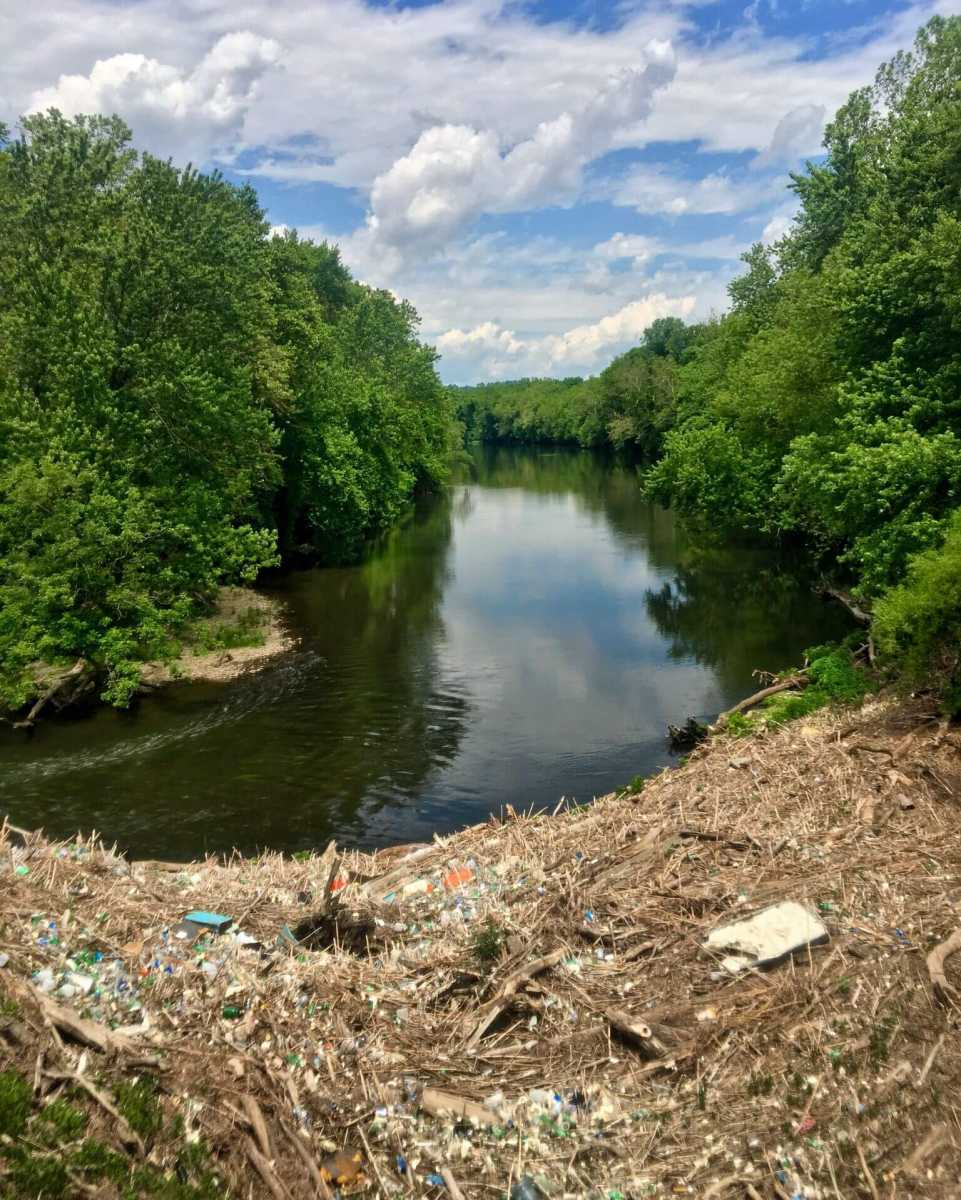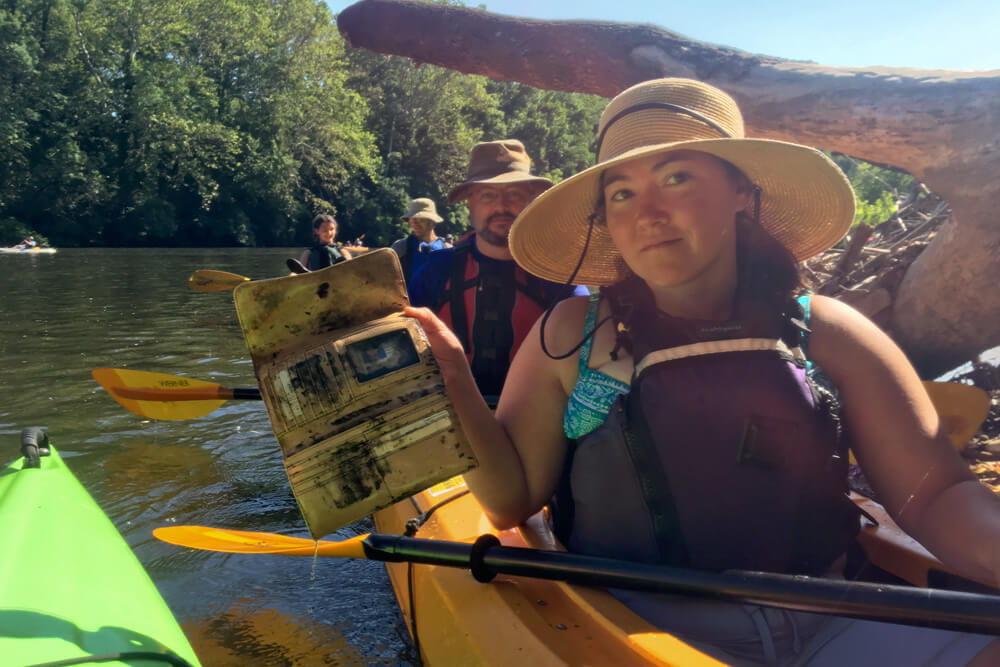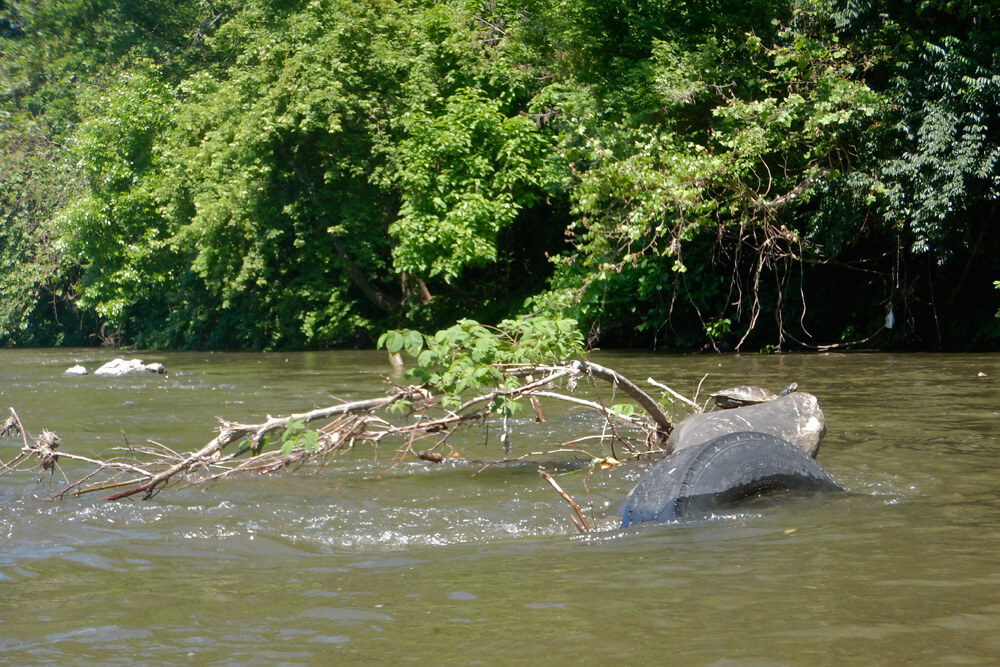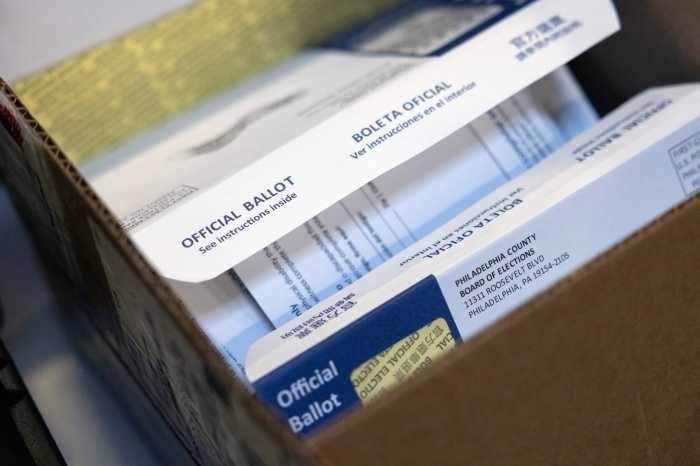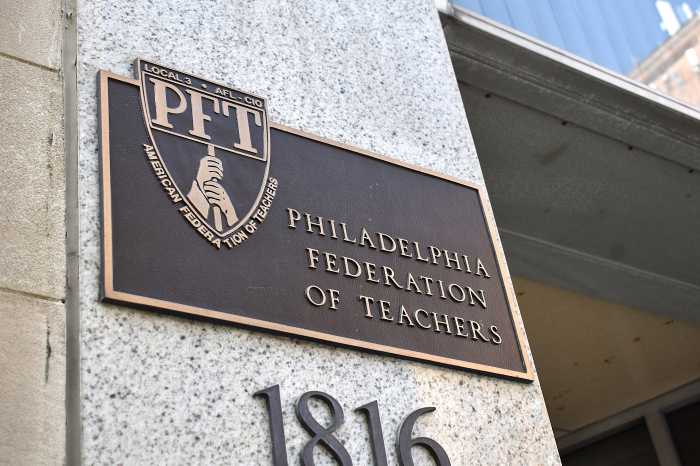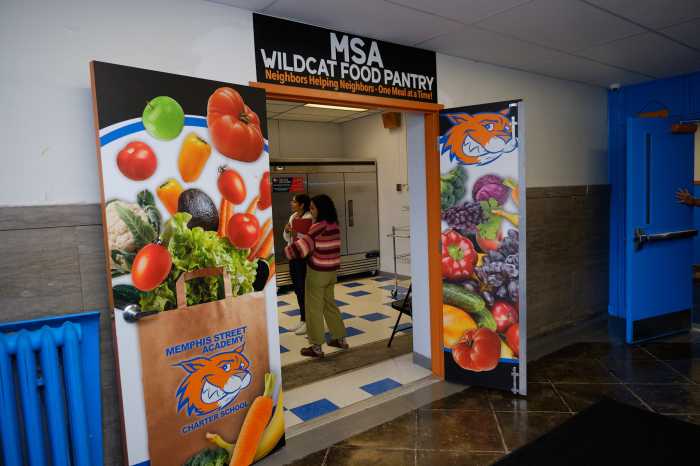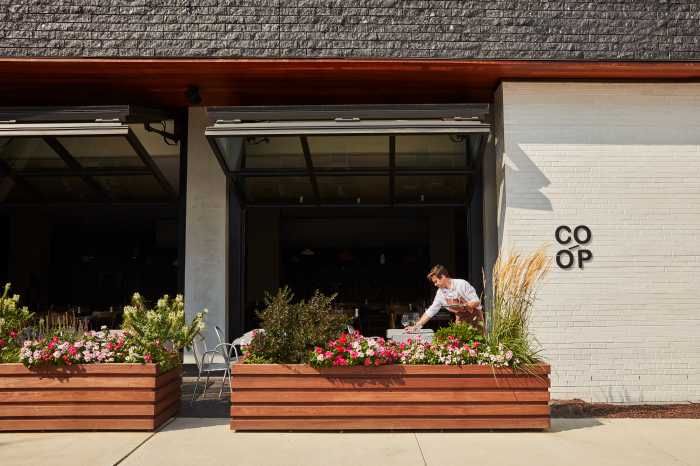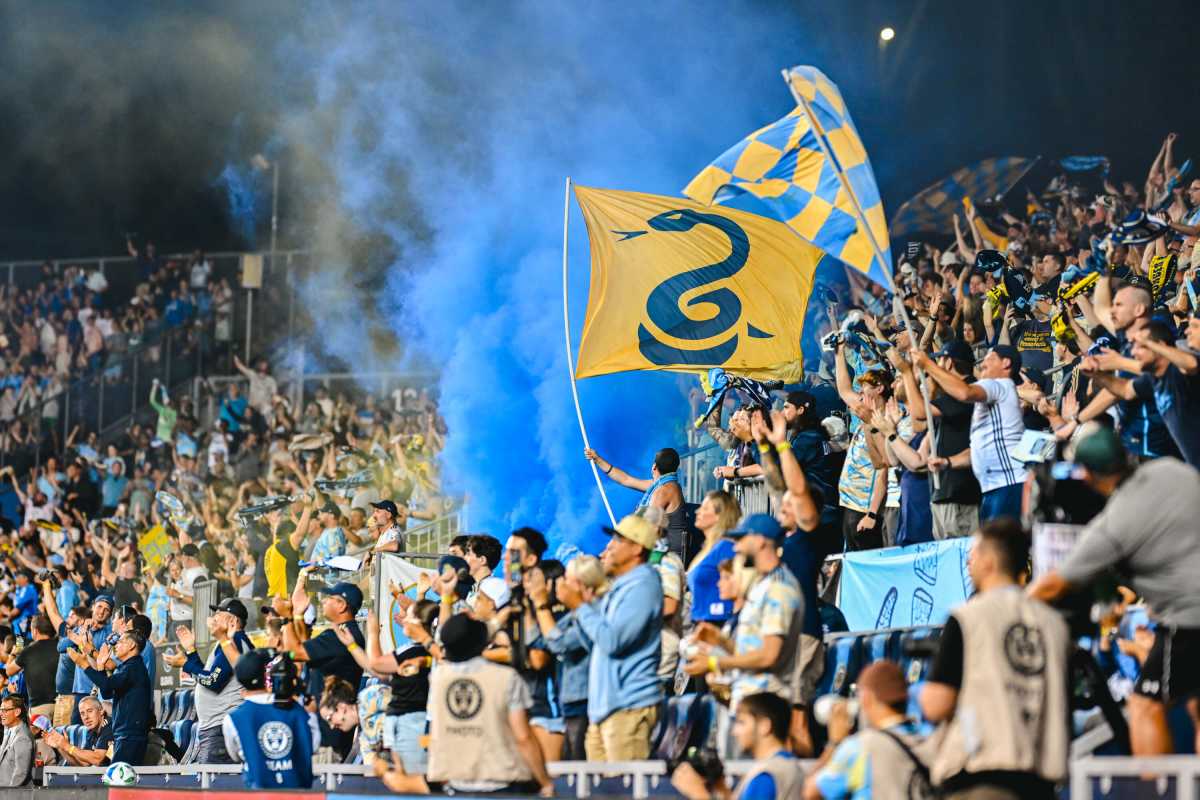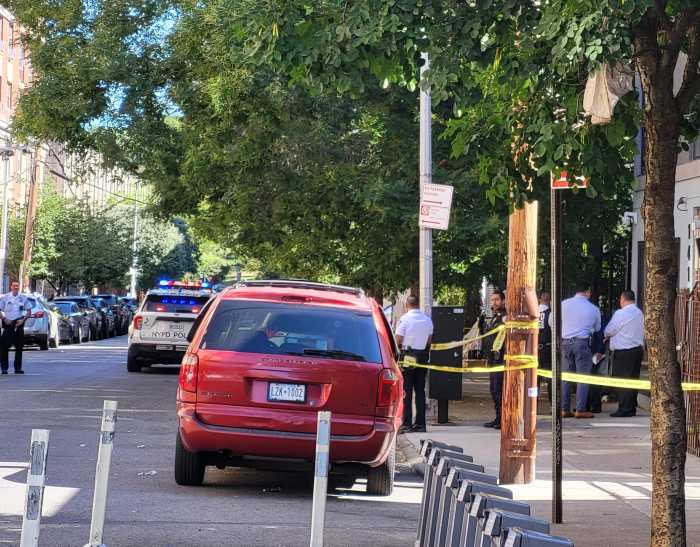Bradley Maule spits out the names of bottlers of water like obscenities.
“Deer Park. Poland Springs. Dasani. Arrowhead,” he says. “Each of them is made of three types of plastic: the bottle, the label and the lid … They might as well last forever, because when they break down they just break down into smaller pieces of plastic.” For $1 to $1.75, plastic water bottles offer fresh drinking water that, from a water fountain or home tap, costs at most pennies. But the fact that used bottles of water are among the biggest sources of floating litter on public bodies of water is what makes the irony particularly offensive. Floating water bottles were the most common garbage that Maule observed on the Schuylkill during a recent seven-day, 112-mile trek down the river, from Schuylkill Haven to the Philadelphia Navy Yard. Maule traveled with nearly 100 other kayakers and canoeists as part of the annual Schuylkill Sojourn, now in its 18th year.
But Maule played a role that is new this year, that of the Sojourn Steward, organized by the Schuylkill River Heritage Area and the Partnership for the Delaware Estuary’s Schuylkill Action Network, with a specific mission of photographing litter on the river and sharing his observations on Facebook,Instagram and his own site, PhillySkyline.com. “We decided to have this Sojourn Steward position and to have them go on the sojourn, have a GPS-enabled camera and take photos of wherever they saw trash along the rivet so we could map it out, learn where the problem areas are and what kind of trash it is,” explained Virginia Vassalotti, Schuylkill Action Network Specialist at the Partnership for the Delaware Estuary. During the sojourn, Maule got to explore some of the region’s most beautiful scenery, and saw wildlife along the river including herons, bald eagles and turtles, signs of a natural resurgence that’s been ongoing since the state began cleaning up the then-heavily polluted river in the ’50s. But inevitably, he also saw lots of litter. “Several of us saw a bald eagle perched in a tree, not 20 minutes after launch,” Maule wrote on day one of the sojourn. “Within the same timeframe, I started noticing trash.” Now, Maule’s voyage has gone to creating a photo map of litter along the Schuylkill — documenting everything from tires, a dishwasher and bowling pins to a Native American spin drum found off the river banks in Lower Merion Township. That’s just the garbage that can be seen floating on the surface — ironically, in the days immediately following the Schuylkill Action Network’s annual volunteer clean-up of the river, the Schuylkill Scrub, which has been known to remove as much as a million pounds of trash from the river and ends in May. Despite the Scrub, there was still plenty of garbage to be found. “Ostensibly, this would be the cleanest that the river would be. For the most part, I found that to be true,” Maule said of the voyage. “The photography I did is by no means complete. I recorded 89 tires, just counting them one by one, but that was just on the surface. God knows how many tires are beneath the surface.” On day three of the sojourn, heavy rains washed what seemed to be all the garbage in the nearby city of Reading into the river, Maule said. It was a reminder of how often rivers wind up being garbage’s final resting place. “It’s the human connection to rivers. Litter doesn’t just stay on the ground,” Maule said. “If it’s left untouched, litter will make its way into the waterway.” To learn more about the Schuylkill Sojourn or Maule’s trek, visit schuylkillwaters.org.
